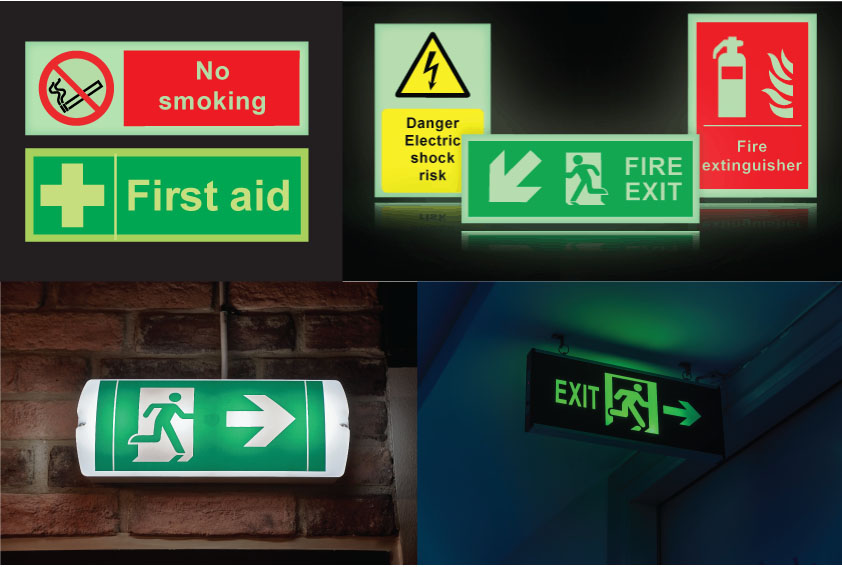
Agreed on 27 February 2023, the Windsor Framework sets out new arrangements for the movement of goods between Great Britain and Northern Ireland.
Born out of Brexit, this framework aims to ensure the smoother flow of goods by removing limitations on East-West trade, preserving Northern Ireland’s standing in the Union, and enhancing the democratic fairness of the Northern Ireland Protocol.
Here, we explain the agreement's relevance to the labelling of goods, including medicines (UK only), food (not for EU), and chemicals/hazards.More...

More than simply being an annoyance, power outages can become a real hazard, especially in areas which have convoluted layouts, increased foot traffic, or dangerous materials.
In the interest of efficient evacuation and quick response in case of emergency, building managers should ensure good visibility during a power failure, no matter if they’re in charge of a commercial building, office, warehouse, or laboratory.
Photoluminescent safety signs, which can be seen clearly in the dark, are a key element of that. Here, we’ll outline the essential signage each building needs, any specific regulations, and the unique requirements for certain building types. More...

In addition to extensive teaching guidelines, a robust school health and safety policy is essential for ensuring students and teachers alike find themselves in an optimal learning environment.
In our brief guide to school health and safety, we outline key legislation, the responsibilities of different parties in the school, and a quick school health and safety checklist. More...

Businesses with a physical presence, and especially retailers, have always faced challenges from shoplifters. And while there was a natural dip in shoplifting statistics during the pandemic, more recent statistics point towards an uptick in numbers.
For the period between June 2022 and June 2023, police across Wales and England recorded a 25% jump in shoplifting incidents when measured against the previous year. Add to that the seasonal increase in theft around big holidays, and retailers’ bottom lines can be seriously affected.
Luckily there are several things you can do to protect your profit margins and save your operations from disruption. Here’s how to stop shoplifters with adjustments ranging from simple signage to high-tech CCTV: More...

ANSI health and safety labels are designed to prevent accidents and protect against hazards. That being said, they’re slightly different to other safety labels – that’s because they’re all about sticking to the standards of the ANSI.
So, what is the American National Standards Institute (ANSI) and why should you use its labels to make your workplace safer? Read on to find out, here. More...